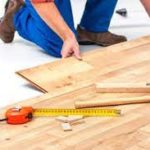 You already know this, but buying a home is indeed one of the biggest financial commitment most of us will ever make. With rents on the rise faster than our incomes, many are looking to enter the buyer’s market. Regardless of where you are looking to buy, the tips below will help you achieve your home ownership goals.
You already know this, but buying a home is indeed one of the biggest financial commitment most of us will ever make. With rents on the rise faster than our incomes, many are looking to enter the buyer’s market. Regardless of where you are looking to buy, the tips below will help you achieve your home ownership goals.
Start by securing your mortgage first. Finding a dream home before you secure pre-approval for a mortgage can be a costly mistake. Seek and choose a lender at least three months before starting your house hunting. This will give you enough time to pay down debt as well as improve your credit score, which qualifies you for a better loan.
Assess what you can afford. Before purchasing a home, calculate your monthly debt-to-income ratio. Experts recommend using the 43 percent rule. This is done by taking your gross monthly income and multiplying it by 43 percent. Next, you need to add up your monthly debt (property taxes, mortgage, utilities, insurance, car payment, credit card payments) to know your total monthly debt. If the total debt is less than 43 percent of your gross monthly income, consider yourself set.
Find a shorter-term mortgage. A 15-year fixed-rate mortgage fee for homeowners who can manage payments are the best deal. You’ll save thousands despite the higher monthly mortgage payment, if not hundreds of thousands compared to a 20-year or 30-year fixed-rate loan. Fewer repayment years mean lower interest rates.
Be wary of low-interest loan rates. Don’t be tempted by a low-interest rate without first calculating the cost of fees. To ensure that you’re comparing correctly, compare loans by their annual percentage rate (APR), and not by “interest rate” only. APR combines a loan’s interest rate with closing costs as well as other fees. Check the loan’s total cost, monthly payment, and loan terms as well.
Look into special lender programs. If you can afford a 20 percent down payment, then you won’t be forced to purchase a mortgage insurance, which costs hundreds of dollars yearly. The Australian government also provides a First Home Owner Grant (FHOG). Under the scheme, a one-off grant is payable to first home owners that satisfy all the eligibility criteria.To see if you are eligible or to obtain more information about the First Home Owner Grant, please select the state or territory in which you intend to purchase your home.
Check the neighborhood. Researching neighborhood demographics is vital. Outside elements like crime, medical centers, and the school district qualities will impact the property values as well as potential buyers if ever you decide to sell in the future. You may also consider the number of renters in the neighborhood. Chances are, you’ll find Brisbane, Perth, Melbourne Adelaide or Sydney house and land packages that will fit your preferences. New developments in suburbs near the city center are good places to start looking.
Don’t skip home inspections. Hire a home inspector to help you check the age and condition of the big-ticket items of a home before purchasing. The cost of subsequent repairs can sometimes far exceed the price of a thorough inspection. Ensure that your inspector checks the most expensive fixers including the foundation, furnace, roof, plumbing, electrical, insulation, and high-cost appliances if any.
End Note
Lastly, after purchasing a home, it’s worth considering insurances to protect your investment. Inquire about multi-policy discounts, loss-free discounts, protective device discounts, and green home discounts. Not all insurers offer the same deal.




No Comments